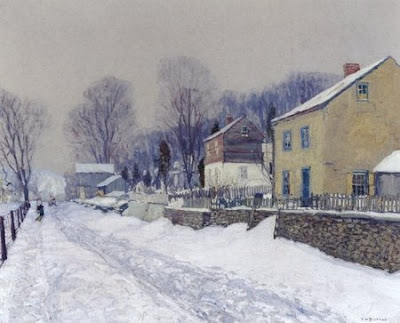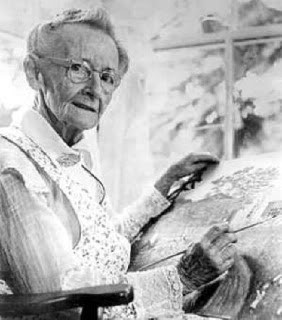George Edgar O
 hr (1857-1918) may not be well known internationally, but his artistic production was prolific to say the least. Proud to hold the moniker “Mad Potter of Biloxi” Ohr was always convinced that he would eventually be recognized as a genius, even if it occurred after his death. For the past few years, work was being done on a new museum in his honor to showcase his prodigious oeuvre.
hr (1857-1918) may not be well known internationally, but his artistic production was prolific to say the least. Proud to hold the moniker “Mad Potter of Biloxi” Ohr was always convinced that he would eventually be recognized as a genius, even if it occurred after his death. For the past few years, work was being done on a new museum in his honor to showcase his prodigious oeuvre.Ohr was born in Mississippi and moved to New Orleans in 1850 where he first experimented in ceramics. He studied under the potter Joseph Fortune Meyer and in the 1880s, traveled all over the states to acquaint himself with the work and interest of other potters. Upon returning to Biloxi in 1883, Ohr built a pottery shop next to his father’s house in hopes of earning a living creating art, not pots. “Pot-Ohr-E” was unsuccessful to say the least. Employing local, red clay from the banks of the Tchoutacabouffa River, Ohr’s creat
 ions ranged from ordinary pitchers and planters to his pride and joy, “mud babies”. These were pieces formed into fantastic shapes and glazed with vibrant colors. Although his craftsmanship was remarkable and unmatched by any other potter, Ohr’s style was unappreciated by other artists of the time, lacking the classical style that was popular. Many were interested in his work, but because Ohr refused to sell his pieces for less than what they were worth in gold, his shop faired poorly. The world was not yet worthy for the eccentric and contemporary works of George Edgar Ohr.
ions ranged from ordinary pitchers and planters to his pride and joy, “mud babies”. These were pieces formed into fantastic shapes and glazed with vibrant colors. Although his craftsmanship was remarkable and unmatched by any other potter, Ohr’s style was unappreciated by other artists of the time, lacking the classical style that was popular. Many were interested in his work, but because Ohr refused to sell his pieces for less than what they were worth in gold, his shop faired poorly. The world was not yet worthy for the eccentric and contemporary works of George Edgar Ohr.After a fire left his pottery shop in ruins, Ohr vigorously labored to complete thousands of pieces, most between the years 1895 and 1905. His created numerous pots, pitchers and vases, all of which mirrored his eccentricity. They were outrageous and amazing, and consisted of wild hues and colors. Their shapes and design were anything but symmetrical and often had a crumpled-bag look to them. Even the handles for his vases and pitchers were unusual. He showcased them at fairs and exhibitions, employing unconventional and wacky advertisements to lure customers, boasting “no two alike”.
As much time a
 nd effort Ohr placed on advertising, he hated selling his pieces. Often not wanting to depart from his most beloved works, he would put extravagant prices on them in hopes of deterring any sale. In the rare occasion when a customer did purchase one of his ceramics, he would go to extremes to retrieve the item back, even chasing them down the street, their money in hand. In 1909, at the age of 52, after not selling a “mud baby” for nearly 25 years, Ohr closed his shop and never threw another pot. He spent the rest of his life in madness until he died at the age of 60 of throat cancer.
nd effort Ohr placed on advertising, he hated selling his pieces. Often not wanting to depart from his most beloved works, he would put extravagant prices on them in hopes of deterring any sale. In the rare occasion when a customer did purchase one of his ceramics, he would go to extremes to retrieve the item back, even chasing them down the street, their money in hand. In 1909, at the age of 52, after not selling a “mud baby” for nearly 25 years, Ohr closed his shop and never threw another pot. He spent the rest of his life in madness until he died at the age of 60 of throat cancer.His “mad” creations and goofy portraits characterize him today as the Salvador Dali of pottery. A self-proclaimed oddball, he thrived on imperfection and often patronized the art world by deliberately distorting his perfectly made objects. Locals thought him insane, while artists of the time simply misunderstood him. He described his work as "unequaled, undisputed, unrivaled”. By the 1950s, a school of Abstract Expressionism ceramics had been born and artists began to take notice of Ohr’s work. Today, his abstract pieces are highly coveted and his work sells for thousands. The world finally accepted Ohr as the great potter he always knew he was.
 William Woodward’s “Biloxi Art Pottery,” 1890s. Oil painting. Collection of the Biloxi Public Library.
William Woodward’s “Biloxi Art Pottery,” 1890s. Oil painting. Collection of the Biloxi Public Library.Researched and written Shanna Seiberlich.
MIR Appraisal Services, Inc.
Principal Appraiser: Farhad Radfar, ISA AM
307 N. Michigan Avenue, Suite 308
Chicago, IL 60601
(312) 814-8510
MIR Appraisal Services, Inc., is located just steps from the Art Institute of Chicago and the Chicago Cultural Center; please do give us a ring to set up an appointment for a verbal evaluation of your most prized works of art.





















